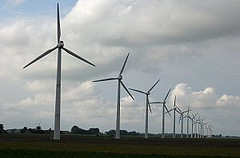Report Predicts Rise of Small Wind Turbine Energy Worldwide

According to a new report entitled Small Wind Power, released by Navigant Research, installations worldwide of small wind turbines are expected to double in the next five years. Small wind turbines (SWTs) produced 86 megawatts of energy in 2012, but should be producing 172 megawatts by the year 2018. A single megawatt of energy is enough to power between 750 and 1,000 homes.
By 2018, SWTs are expected to be a $3.3 billion industry. Though the growth is expected all over the world, the small wind turbine industry in the United States is still trying to recover from a lag in the market that occurred when certain incentives, such as rebates which have expired or been lowered. However, the volatility of diesel fuel costs is helping the U.S. market recover.
Feed-in tariffs (long-term contracts offered to producers of renewable energy sources) are driving up the rate of installations of SWTs in countries such as the United Kingdom, Germany, Japan, and Italy. This growth is further fueled by the greater demand for on-site power generation (not depending on local power grids) and China’s ever-increasing consumption of energy.
The one thing slowing the installation of SWTs worldwide is the growing competition from the solar photovoltaic (PV) sector. Manufacturers and retailers of solar PVs have been able to drop the prices of their products significantly. Customers can now participate in leasing programs and third-party financing plans, which are not yet available for purchasing and installing SWTs.
The outlook for all forms of renewable energy is quite good overall. The United States is not yet offering feed-in tariffs, but pressures for these types of incentives is growing from both the consumer and environmental groups. Some states are looking into the possibility of offering feed-in tariffs in the absence of a national policy.







